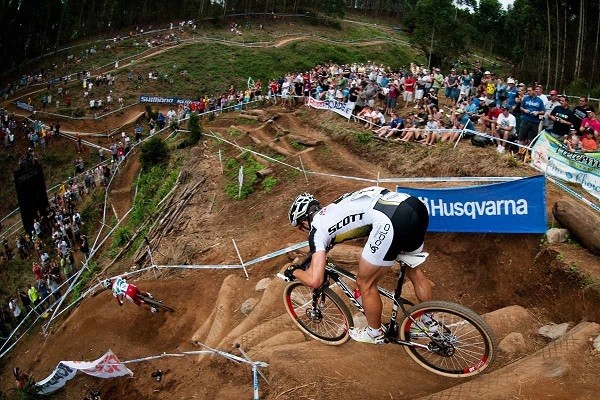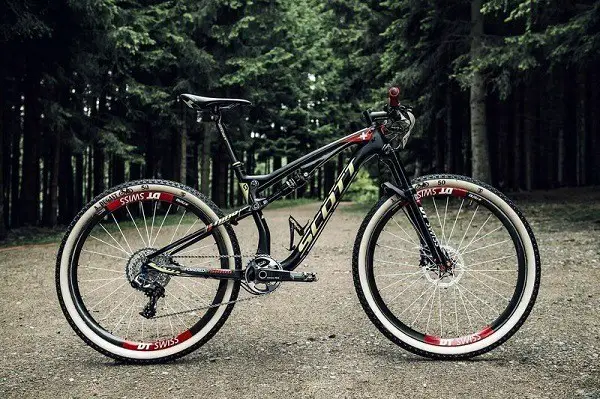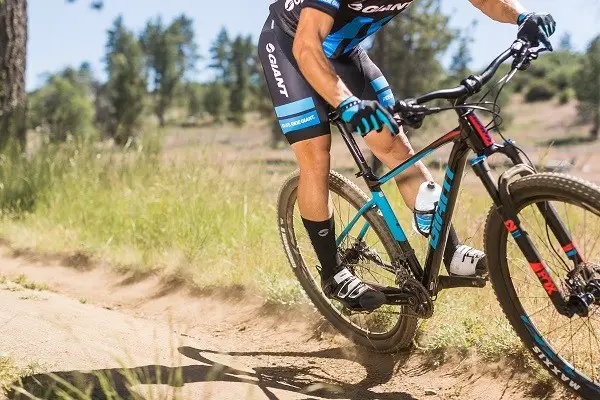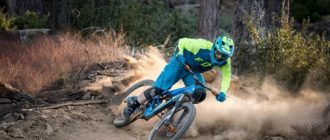“Cross country” translates to “rugged terrain. This term was used in 1996 to describe a type of Cross-country—what-it-is–nuances race included in the Olympic program. In detail, what is cross country, the features of this direction in mountain biking, as well as which bike is suitable for this discipline, consider below in the article.
Cross country – what is it
Cross country is not just riding on rough terrain. Just because you’re biking through a wooded area doesn’t mean you’re an Olympic sport. What is cross country in professional slang? It is the name given to extreme riding on difficult competitive tracks, which are specially equipped according to the requirements of the IOC.
The prerequisites for successful participation in competitions are:
- endurance;
- excellent physical fitness;
- short reaction time;
- a nervous system that is resistant to stress;
- availability of a bicycle with special characteristics;
- honed skills and mastery of the technique of “correct” course.
To participate in competitions Cross-country—what-it-is–nuances bikers gain physical shape over several months in a grueling training scheme that differs from any other sporting discipline.
Courses
Cross-country competitions require mountain bikes that can feel confident on Cross-country—what-it-is–nuances trails. Features of these trails are:
- forest roads and dirt roads with curves, steep descents and long climbs – a test of rapid acceleration and sharp braking;
- sections with hills and potholes, mud, sand, roots, rocks and logs;
- wide sections should alternate with narrow ones;
- the share of paved roads must not exceed 15% of the total route;
- regardless of the weather, passability must be good, especially if any of the difficult sections have to be broken – it must be possible to pass them or go round them in parallel sections;
- markings, the start and finish areas must be clearly visible – the same applies to driving directions and dangerous sections of the road (the latter must be signposted and protected);
- there shall be public crossings for spectators, and there shall be refreshment and service points for all participants in the races, as well as an ambulance on duty.
There are marshals with whistles all along the route, and those at important strategic locations are armed with walkie-talkies – it is their job to ensure a steady radio connection every part of the way.
Type of Racing
Depending on what types of circuit tracks are used, there are 3 types of cross country bike races:
- Classic cross country race – Athletes cover five to nine kilometers while completing three to six laps. The time frame for this competition is no more than two hours.
- Race “short track” (this type includes a race to eliminate – Eliminator lasting up to 10 minutes) – Countrymen overcome the short distance (two to five kilometers), doing six to nine laps.
- A marathon is a large race lasting from six to twelve hours.
With a good level of training to overcome any of the tracks can be every cyclist. A great role will be played here by the endurance, training and skills of the athlete. But, of course, these qualities are not enough to win. Many competitors believe that a reliable cross country bike is the key to a successful finish in a race where seconds count.
Do you need a special bike?
A cross country bike is a modified mountain bike. It is lighter, more Cross-country—what-it-is–nuances, dynamic, has an aggressive riding style (perfectly overcomes obstacles and jumps) and high speed performance – especially the difficult sections of the track.
Features of cross country bikes:
- lightweight, high-strength frame made of carbon or aluminum;
- shock-absorbing fork, which will dampen the discomfort of riding on the rocks and bumps;
- rim or disk brakes;
- one or two suspensions – the latter option weighs the design and increases energy consumption for swinging the rear wheel, but increases the Cross-country—what-it-is–nuances capability of the bike;
- Wheels are equipped with lightweight rims, large diameter increases flotation bike, so it is better to choose 29-inch wheels;
- not to complicate the passage of a difficult track (especially on sand or mud), put the tires medium width;
- transmission with a wide range of speeds;
- contact pedals paired with contact boots.
Cross country bikes can’t come cheap. To win the competition of this Olympic discipline, you shouldn’t skimp on a bike. Focus on the price of $ 1000 – on cheaper bikes it is impossible to pass the stages of cross country with good results.
Features when choosing a bike for cross country
To understand how suitable for you this or that model of bicycle, pay attention to some more nuances:
- Evaluate the design and shape of the frame – on it depends on the slope when riding and how evenly the athlete’s body weight will be distributed on the legs and arms.
- Contact pedals – this, you might say, is a chip of Cross-country—what-it-is–nuances discipline professionals. Thanks to them, rotary movements are performed more easily, which greatly saves time.
- Shock absorption fork on country bikes is air and oil with a locking and good resistance. Thanks to its short stroke, the bike has excellent speed, and due to the long stroke of the fork, off-road ability is beyond praise.
- The wheels should have double rims and high-quality spokes that can withstand higher loads. Rubber should be no wider than 2 inches. The tires must have a good hard, “toothy” tread for better traction.
Another important difference between bikes for Cross-country—what-it-is–nuances is the same stability on any surface: wet, stony or dusty.
The most popular bikes in this Olympic sport are the two-pods and hardtails.
The advantages of two-pods: thanks to the two forks the track is felt as accurately as possible, the bike has excellent maneuverability and control, there is no vibration, it is stable on heavy sections. Of the disadvantages: the maintenance costs of the rear shock absorber and bearings in the frame, as well as the weight – these bikes are heavier than bikes with one suspension by 1-6 kg.
The advantages of hardtails: almost instantaneous acceleration, which saves those important seconds in the race. And the price. Hardtails are at least 20-30% cheaper than 2-pods. Plus, these bikes are lighter in weight. And here are the disadvantages: they are harder to handle, the ride is stiffer and more uncomfortable.
Conclusion
The only discipline of mountain biking, which became an Olympic sport – Cross-country—what-it-is–nuances has a key condition: the athlete must be in the shortest possible time to overcome the difficult track and the best way to cope with the challenges that meet at the distance. By choosing the best rover, the cyclist will save his strength and precious seconds to reach the finish line.
Cross-country is a demanding discipline, requiring from the athlete enormous willpower, endurance and considerable physical strength. But it was this discipline that gave the world the best extreme riders, whose names you will find in the top lines of all MTB-rating.









